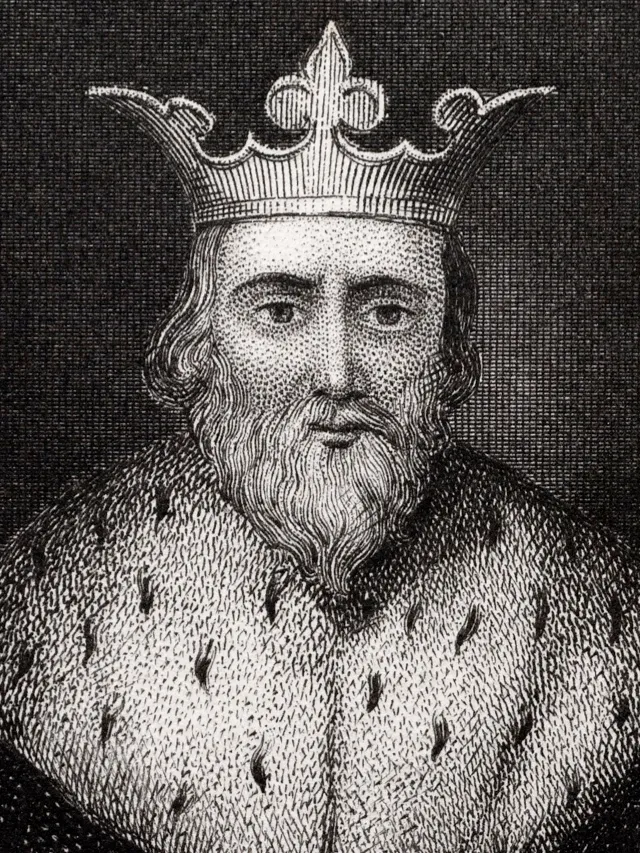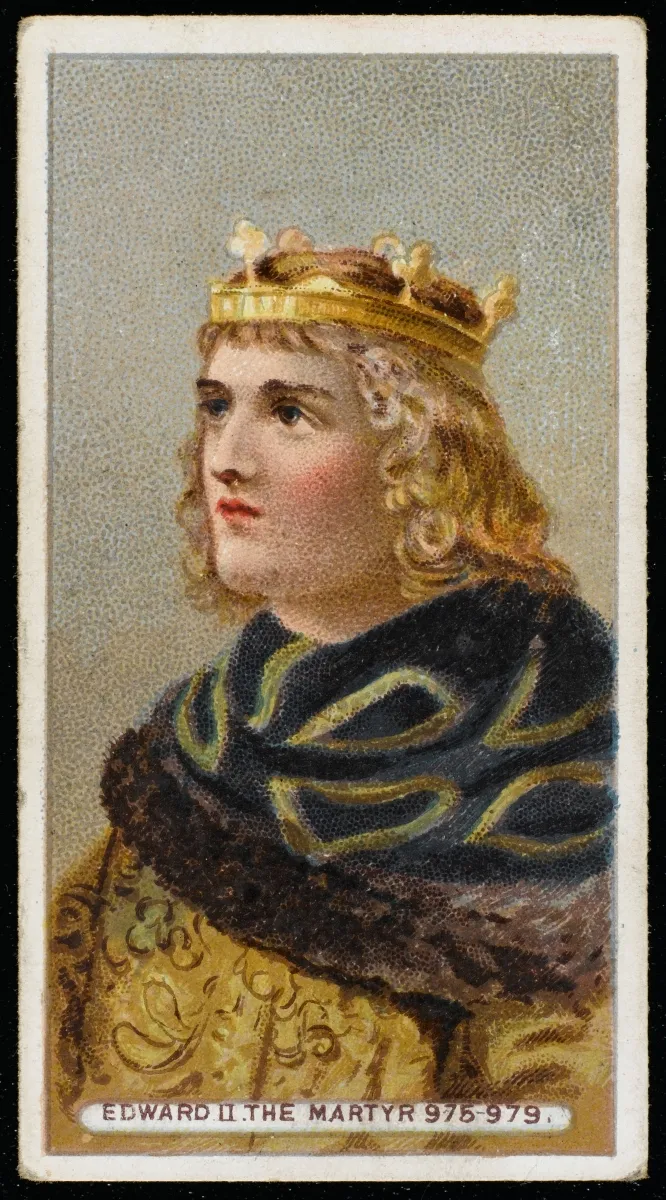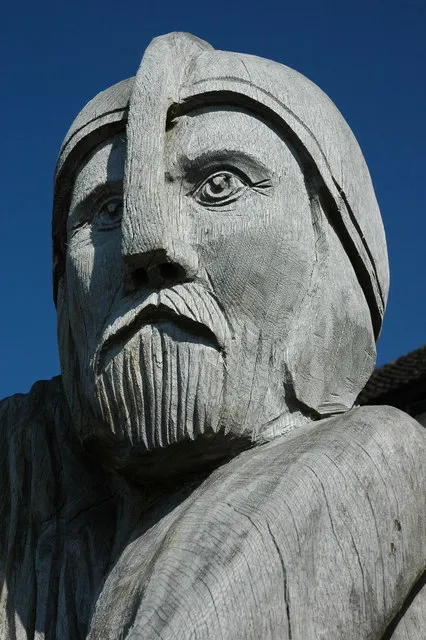Joel Burden unearths the monarchs who have eluded the royal burial chapels and found final resting places in the countryside.
Not all English and British monarchs have been buried in Westminster Abbey. Richard III was famously laid to rest in the long-disappeared Franciscan Friary in Leicester, where his battered body “naked and despoyled to the skyne, and nothynge left aboue hym not so much as a clowe to cover his priyve members” was hastily shoved following the King’s defeat and death at Bosworth Field in 1485.
Richard III was not unique in avoiding the company of the 16 English and British monarchs buried in Westminster Abbey, and the 12 others buried at Windsor Castle. Leaving aside six English and British monarchs who were buried entirely beyond these shores, there remain a surprising number of kings to be discovered on a winding journey through an arc of cathedral cities and towns in southern England...
Britain's lost kings' burial sites
Where is Edward II buried?

Reigned: 1307-1327
Buried in: Gloucester Cathedral
The journey begins in Gloucester at the tomb of Edward II, a medieval gem. Edward was a hapless though not unlikeable king, whose penchant for parvenu male courtiers and interest in low-born activities such as hedging and ditching – at the expense of more martial pursuits such as jousting or fighting the Scots – resulted in a rapid loss of support among his more macho leading barons.
Edward’s ultimate undoing, though, was to fall out with his queen, who thereafter played an instrumental role in having the king deposed in favour of their teenage son. Edward was imprisoned in Berkeley Castle where he was later murdered, it was rumoured, by the insertion of a heated lead pipe into his rectum.
Although Edward II’s burial at Gloucester Abbey can be explained straightforwardly by the church’s relative proximity to Berkeley, it had an unexpected artistic consequence when the king’s canopied, alabaster tomb became the improbable focus of a medieval miracle cult that attracted a flood of free-spending pilgrims.
The magnificent mid-14th-century choir at Gloucester was funded by pilgrim donations made at Edward’s tomb and gave birth to the uniquely English perpendicular style of gothic architecture. In an ironic twist, this later found its most exuberant expression in the mausoleums of St George’s Chapel at Windsor and Henry VII chapel at Westminster Abbey.
Where is Æthelstan buried?

Reigned: 924-939
Buried in: Malmesbury Abbey
South of Gloucester lies the beautiful town of Malmesbury, Wiltshire, whose ancient Abbey contains the tomb of one of England’s least celebrated yet greatest kings. Æthelstan was a grandson of Alfred the Great and was the first ruler to subdue all other kingdoms in Britain to become, for a brief period, and as he proclaimed on his own coinage, “King of the whole of Britain”. He was a notable law-maker, patron of the Church and promoter of learning, and the first English king to play a truly prominent role in continental European politics.
Æthelstan was devoted to the cult of St Aldhelm (d. 709), the first abbot of Malmesbury, which probably explains his choice of burial location. It was also said that the men of Malmesbury played a decisive part in the king’s great victory over the Scots and the Vikings at the Battle of Brunanburh in 937.
A much-damaged tomb effigy can be viewed in the north aisle of the truncated church, but it dates only from the 14th century and no longer marks the exact spot of Æthelstan’s grave, which was lost when much of the original abbey church was demolished at the Reformation.
Where is Henry I buried?

Reigned: 1100-1135
Buried in: Reading Abbey
Immortalised in the eponymous ballad by Oscar Wilde, Reading Gaol stands an unlikely guardian over the site of the high altar of Reading Abbey, the last resting place of Henry I. A powerful and effective king, Henry reorganised the justice system in England and first established the Exchequer to collect and audit royal revenue. He founded the Cluniac Reading Abbey in 1121 as his intended burial site, an arrangement his successor King Stephen would repeat at Faversham in Kent. Endowed with a relic of the True Cross, Reading had the largest abbey church in England, yet only fragments have survived since Dissolution.
Henry I famously died from eating a ‘surfeit of lampreys’ while campaigning in Normandy. His body was eviscerated and wrapped in a bull’s hide to preserve it on the journey home, but the embalming had been botched.
After a month of delays caused by poor weather in the Channel, the corpse had decayed to such an extent that, as one contemporary chronicler salaciously reported, a royal servant actually expired on the spot from inhaling the noxious fumes.
Where is Alfred the Great buried?

Reigned: 871-899
Buried in: Hyde Abbey, Winchester
Onwards to Winchester, where once the remains of Alfred the Great resided on the site of Winchester Cathedral, alongside those of three other kings of Wessex, four pre-Norman Conquest kings of England, and the second Norman king William Rufus, shot in a hunting ‘accident’ in the New Forest.
Alfred has come to be regarded as one of the greatest kings to have ruled within Britain, and although the kingdom he preserved and extended in the face of hostile Danish invasion was that of Wessex, his reign laid the foundation for the establishment of an enlarged kingdom of England. Among his many achievements were legal reforms, the promotion of education in the English language, the foundation of a navy and the reorganisation of military defence around a system of burhs (the origin of ‘boroughs’).
Despite his fame, the whereabouts of Alfred’s bones have long been shrouded in mystery. The king’s body remained on the site of the current cathedral until 1110, when the monks were moved (and took Alfred with them) to a new abbey site at nearby Hyde, allowing a new Norman cathedral to be built on the vacated Minster site. Alfred’s remains were lost at the dissolution of Hyde Abbey, but seemingly were disinterred in 1788 when convicts dug across the site of the high altar while constructing a prison. Scattered bones found buried nearby in the 1860s were long associated with Alfred, but following radiocarbon-dating in 2013 were found to be of 14th-century origin, and so the mystery persists.
Where is Edward the Martyr buried?

Reigned: 975-978
Buried in: Shaftesbury Abbey
It was notoriously remarked that if the abbess of Shaftesbury could have wed the abbot of Glastonbury then their son would have been wealthier than the king of England. Much of this wealth derived from pilgrims to the tomb of Edward the Martyr, one of England’s most obscure monarchs and unlikely saints. Edward was murdered at Corfe Castle while still a teenager, supposedly at the behest of his stepmother, who placed her own son Æthelred on the throne. The presumably penitent Æthelred ‘the Unready’ (r. 978-1016) played a major role in promoting his brother’s cult, and his relics were elevated in ceremonies in 981 and 1001.
As happened with several English kings, the tomb of Edward the Martyr was lost at the Reformation. In 1931, the rediscovery of his remains by JE Wilson-Claridge gave rise to a bizarre passage in the history of English royal burial. Wilson-Claridge retained the royal ‘relics’, as he felt them to be, before donating them, prior to his death, to the Russian Orthodox Church Outside Russia. This bequest was disputed and, in consequence, the relics spent much of the 1970s and 1980s in a bank vault in Woking. They were enshrined at the specially built Church of St Edward the Martyr at Brookwood in Surrey when the case was settled in accordance with Wilson-Claridge’s wishes.
Where is King Arthur buried?

Reigned: Sixth century?
Buried in: Glastonbury Abby
The much ruined Glastonbury Abbey witnessed the burial of three Anglo-Saxon kings, yet today’s visitors, like their medieval counterparts, are drawn by a different sort of royal resting place. At the site of the abbey’s high altar there is a rectangular impression in the grass, framed in plain concrete, with a rusted iron sign that reads: “Site of King Arthur’s tomb. In the year 1191 the bodies of King Arthur and his queen were said to have been found on the south side of the Lady Chapel. On 19 April 1278 their remains were removed in the presence of King Edward I and Queen Eleanor to a black marble tomb on this site. This tomb survived until the dissolution of the abbey in 1539.”
Was there such a king as Arthur and how did he become associated with Glastonbury? Modern historians place the sixth-century king in that elusive space where myth meets half-remembered history. However, Arthur first burst forth into wider popular consciousness in the pages Geoffrey of Monmouth’s influential 12th-century Historia Regnum Brittaniae.
Glastonbury’s monks were not slow to see a good opportunity, especially as they faced the problem of rebuilding an abbey church completely destroyed by fire in 1184. Glastonbury became the fabled Isle of Avalon, and whatever the scepticism of modern commentators, contemporary chroniclers took up the story of Arthur’s rediscovery with credulous gusto, and helped launch the abbey into the medieval super-league of monastic wealth.
More beautiful royal sites to visit and fascinating facts to discover
The 10 most beautiful royal gardens in the UK
Matt Baker: a celebration of the Queen's love of animals
Best royal films set in the British countryside
Discover the Queen's Yacht Britannia
The green King: How Charles III champions nature, farming and the countryside
